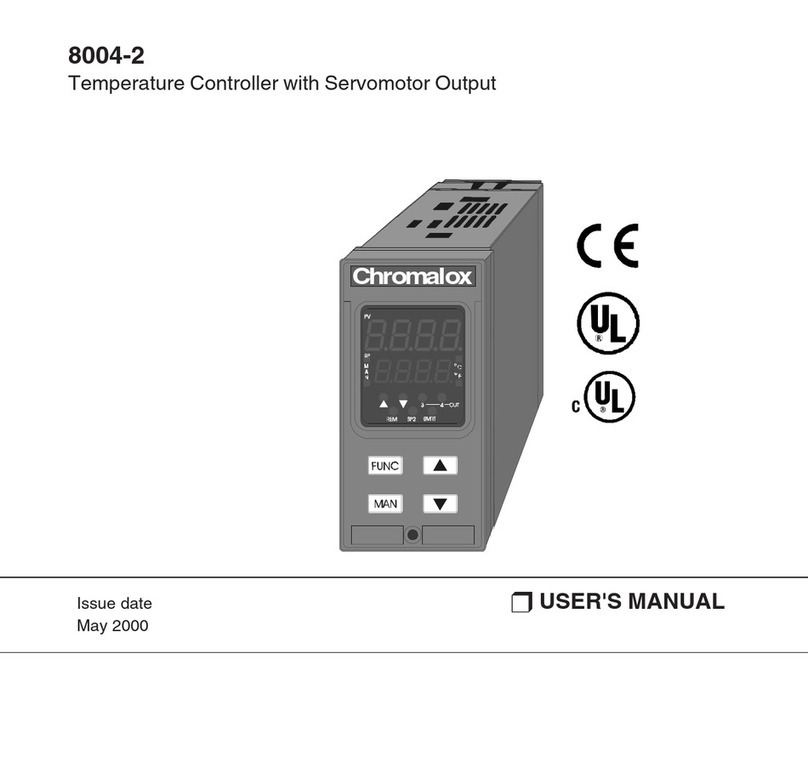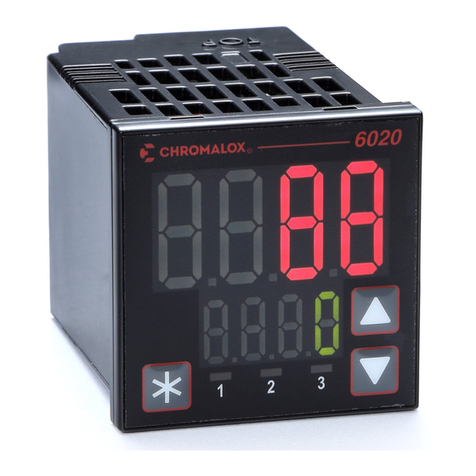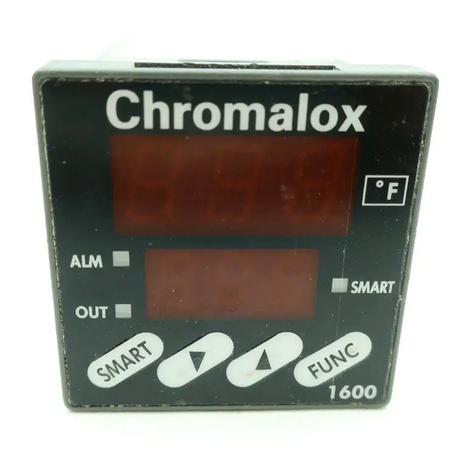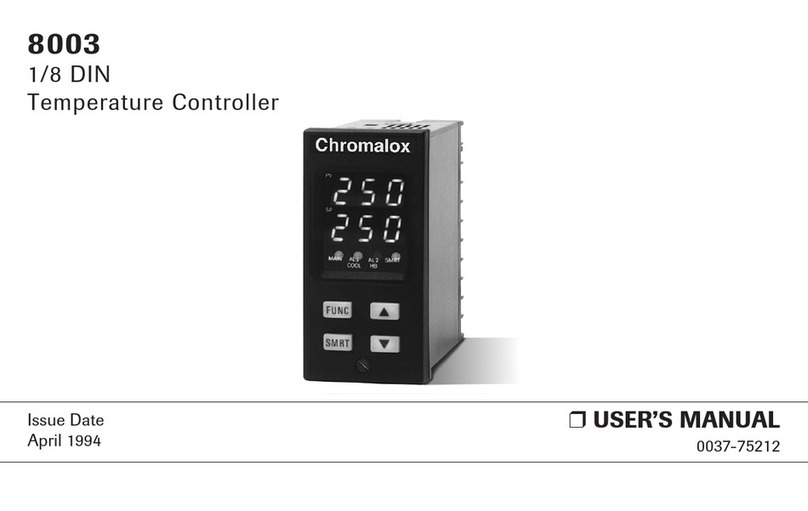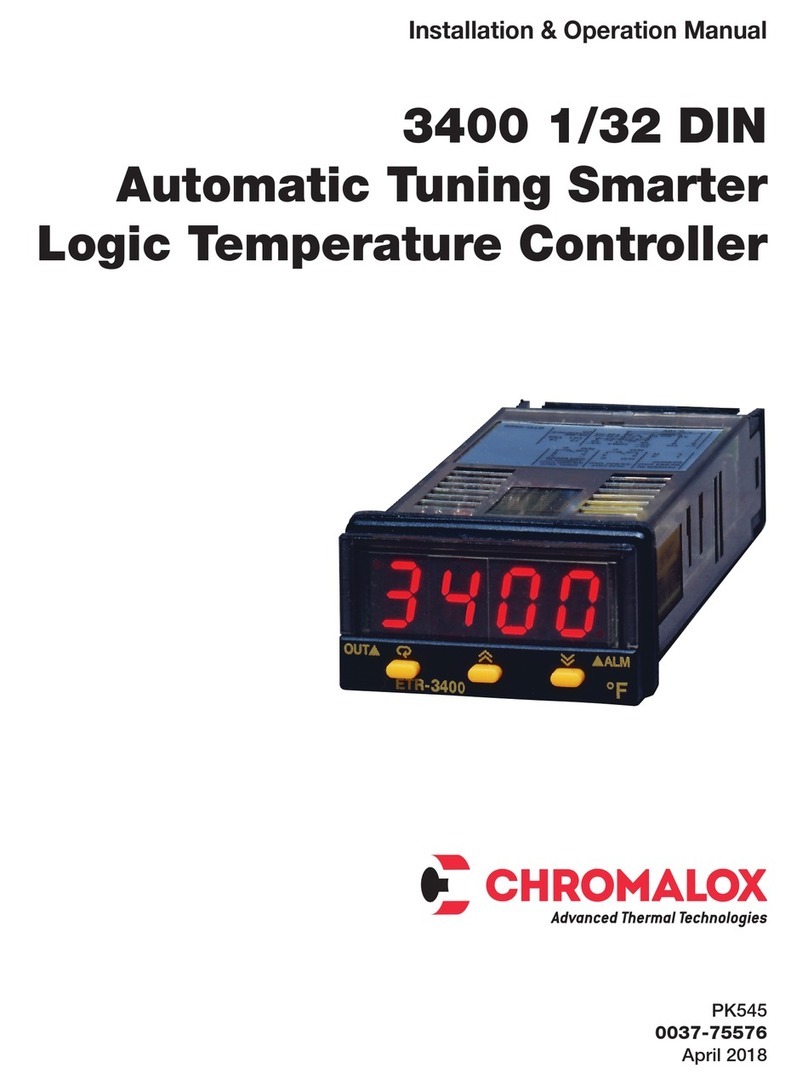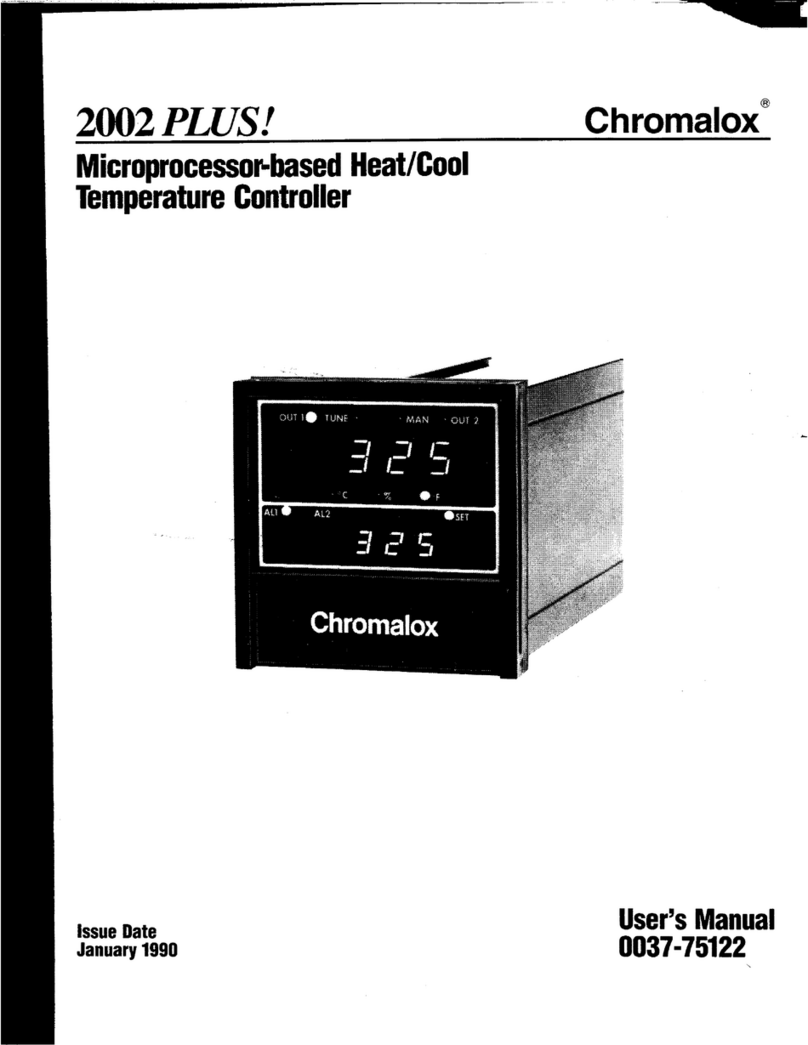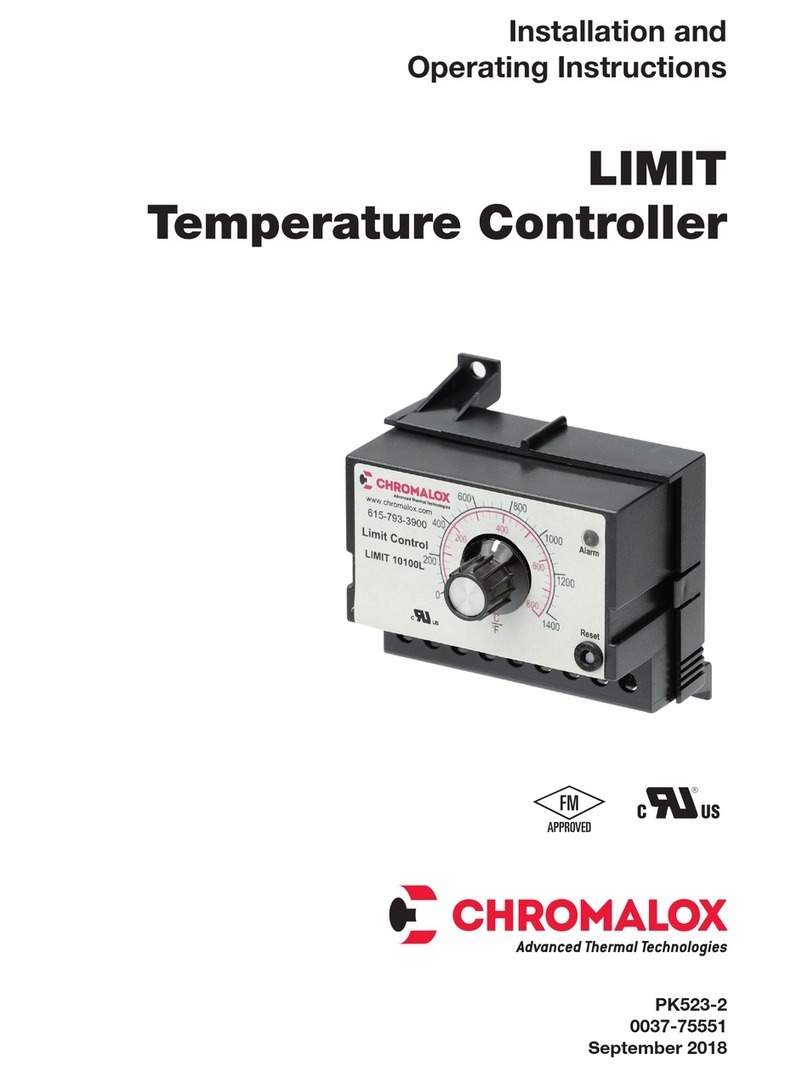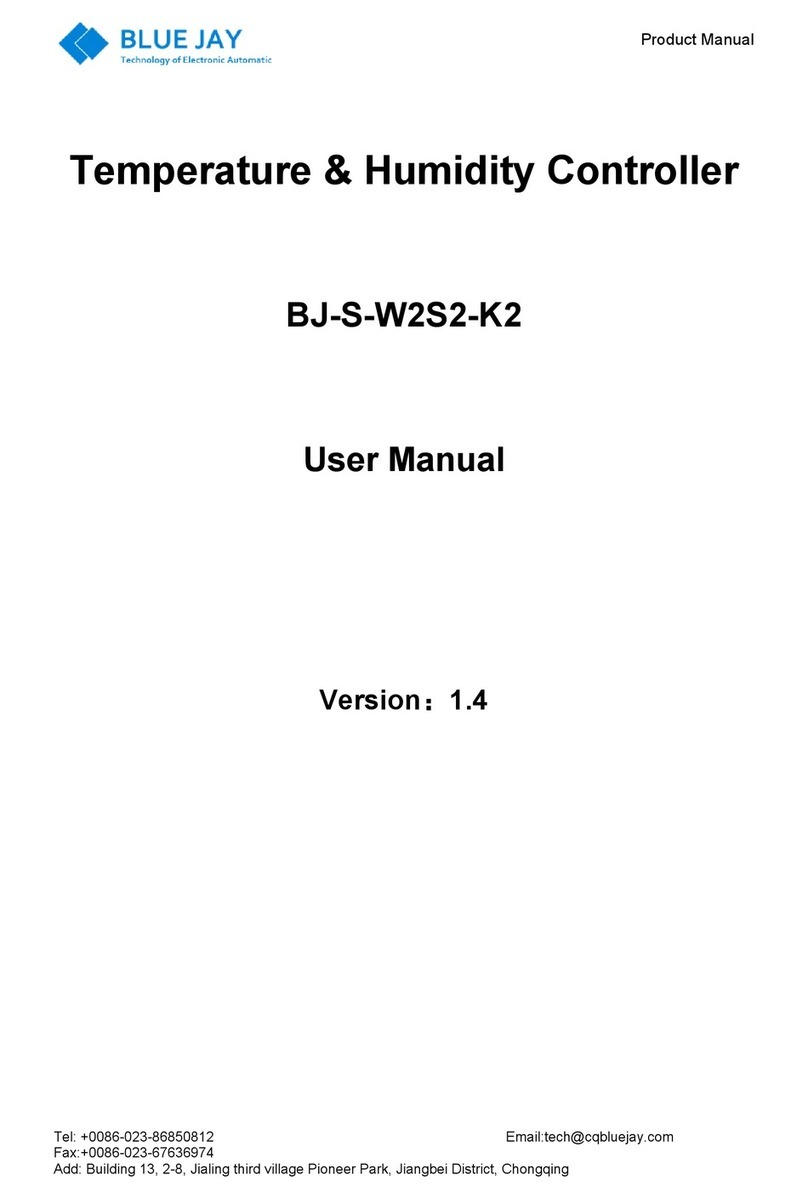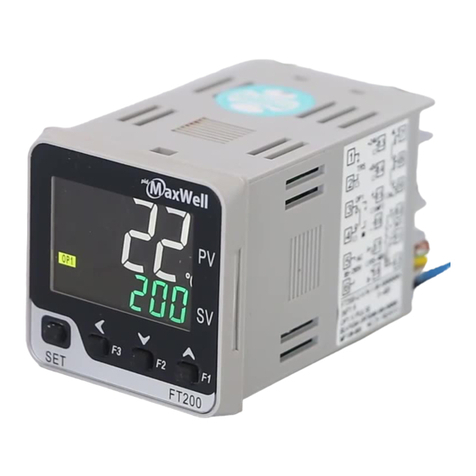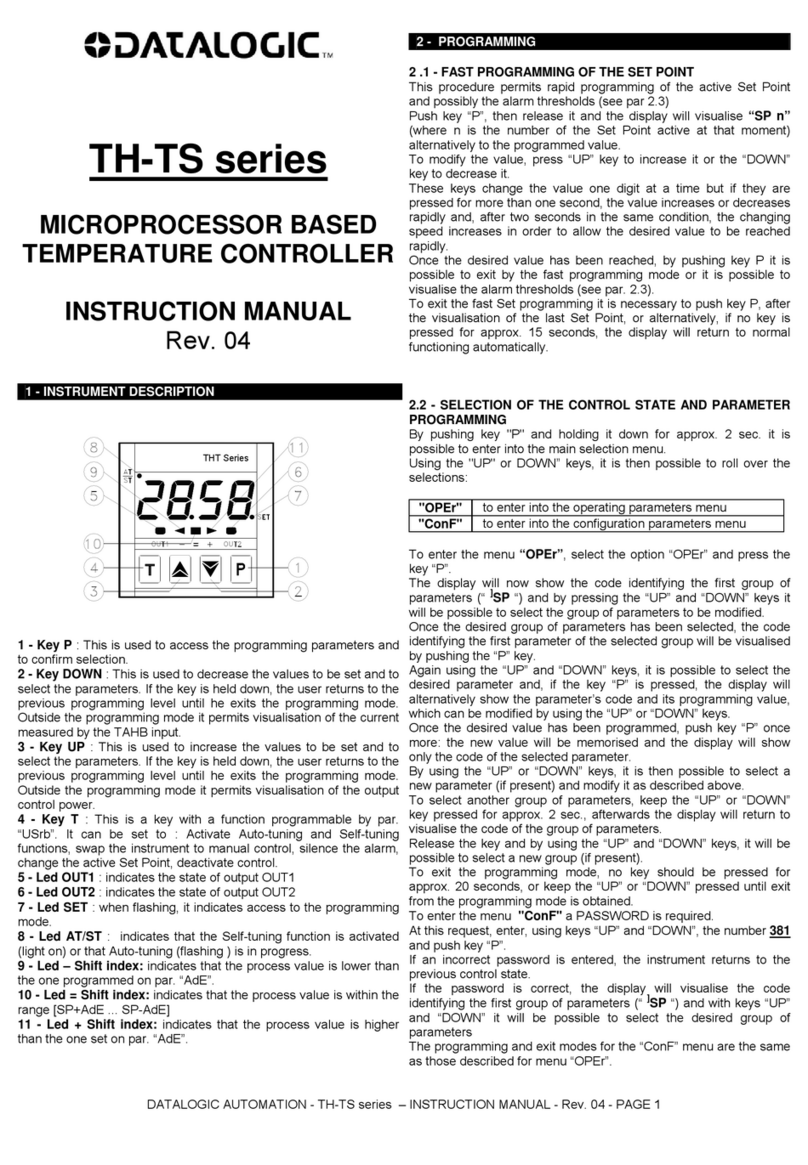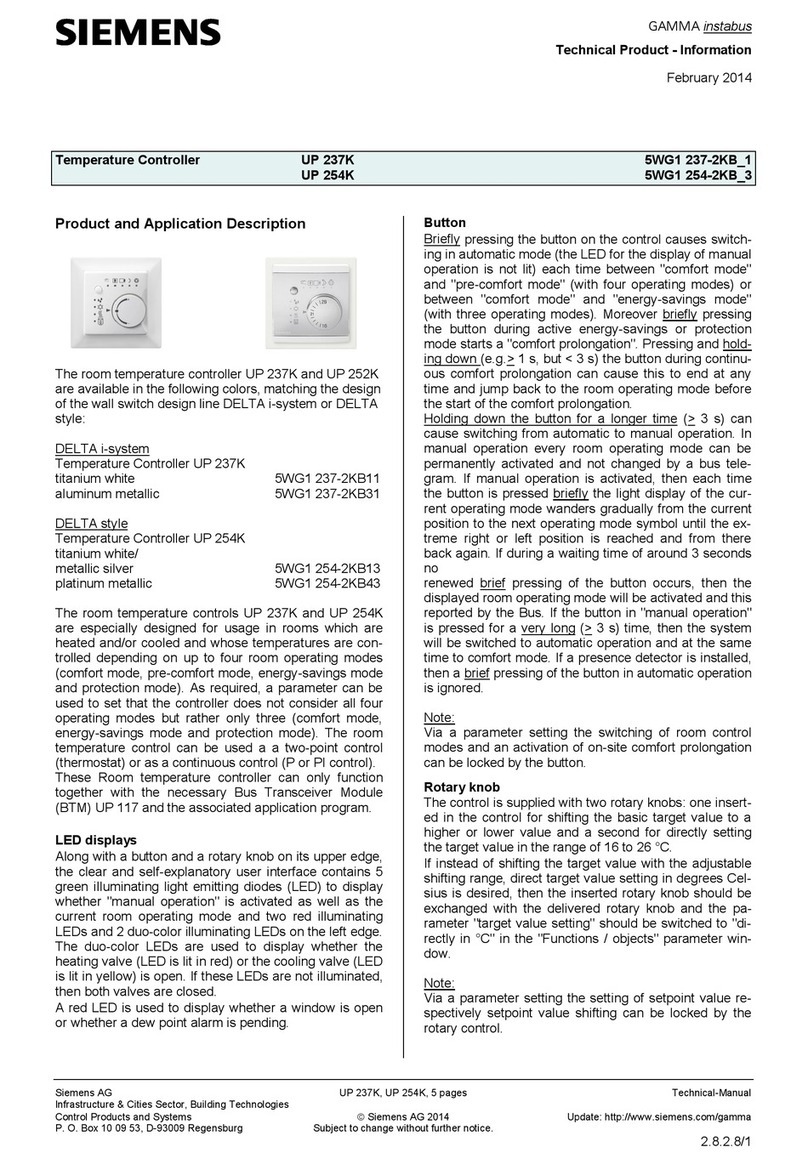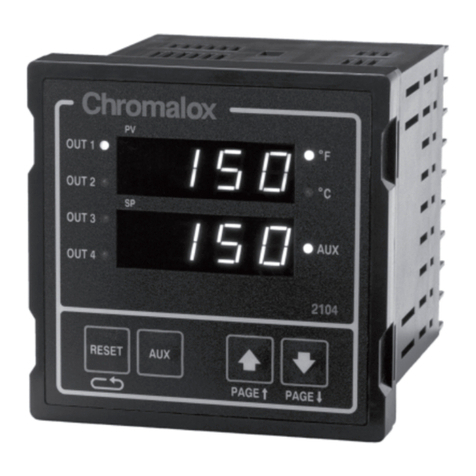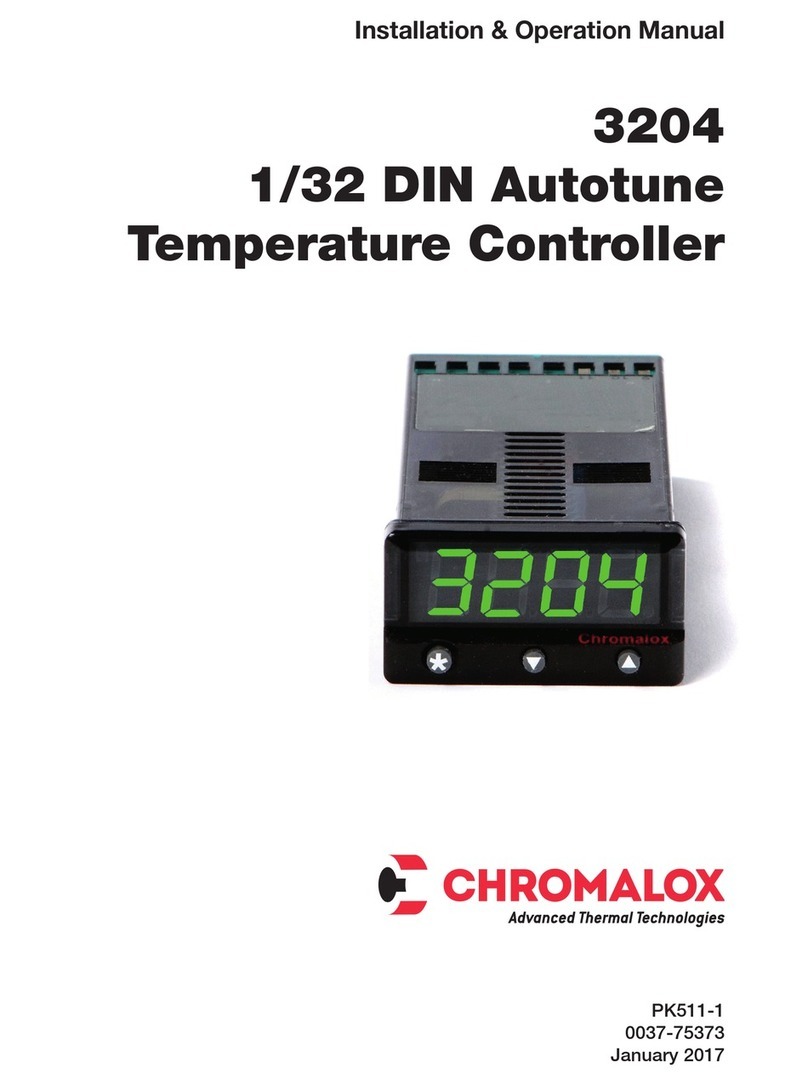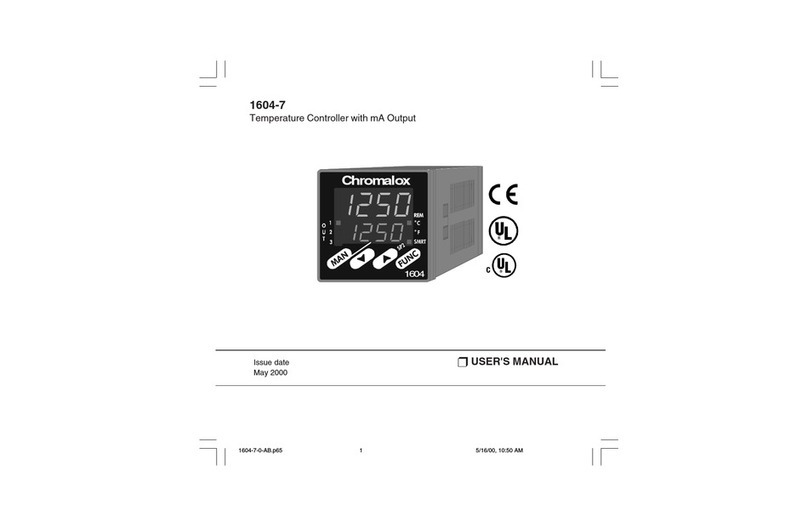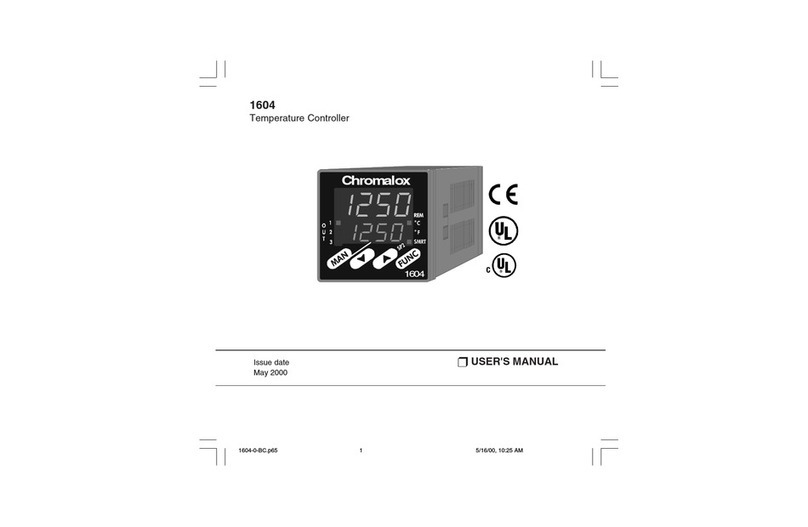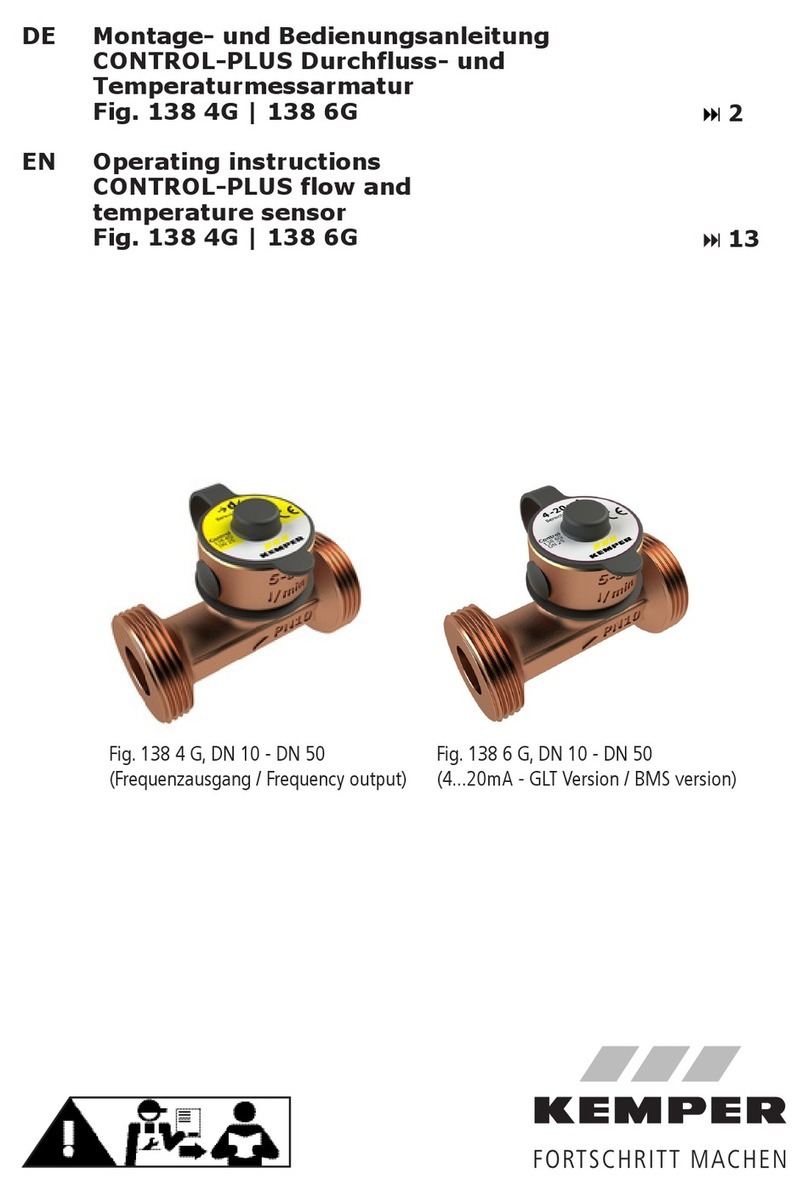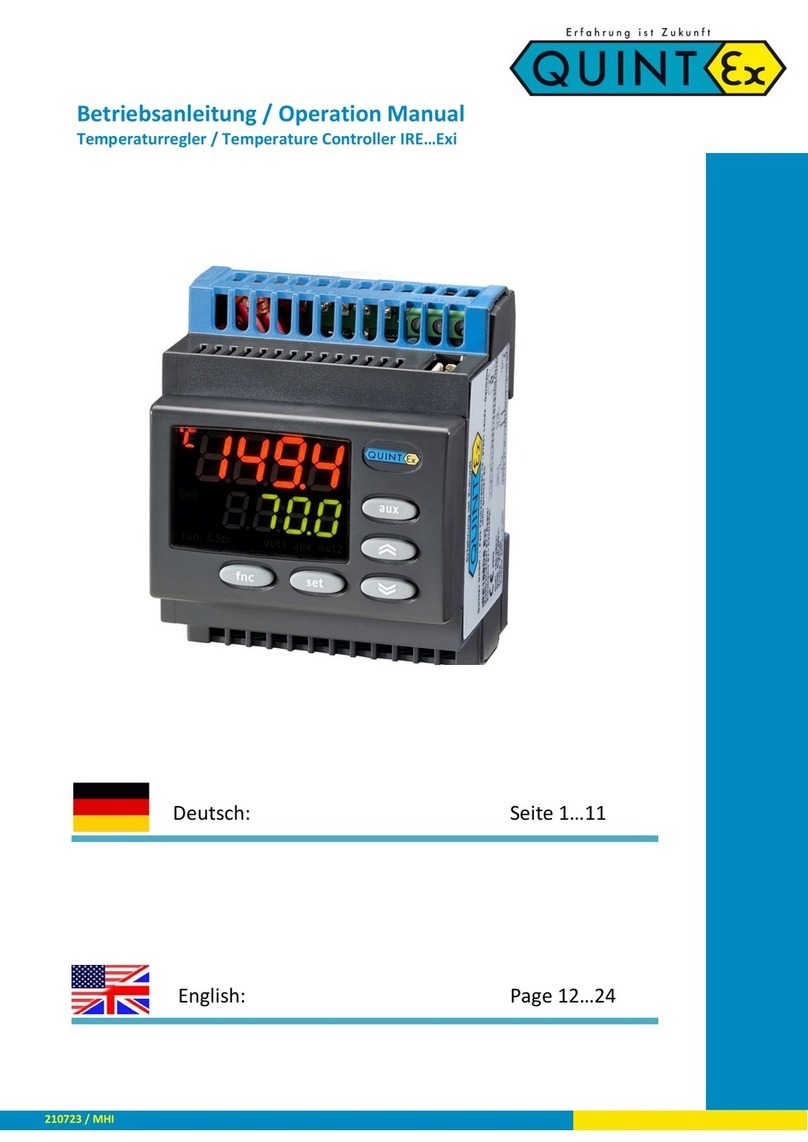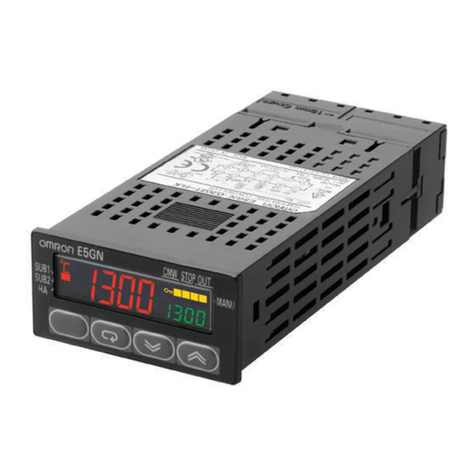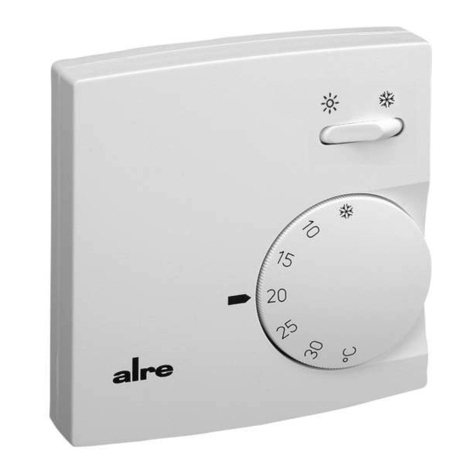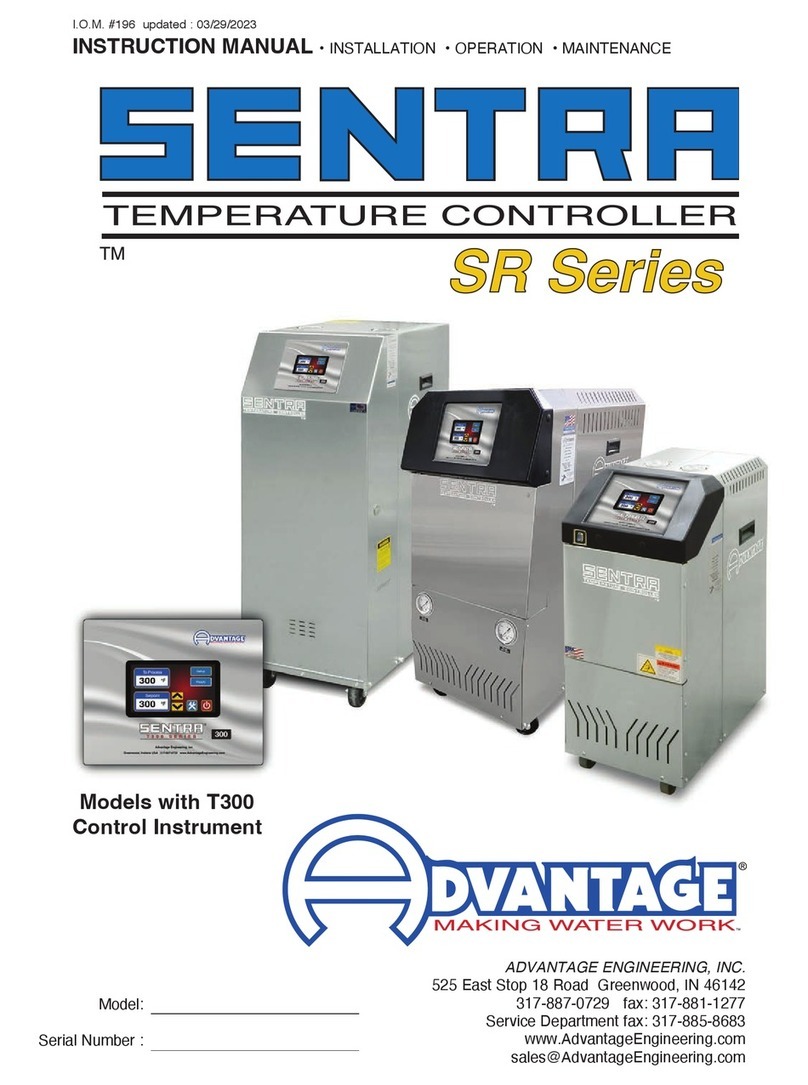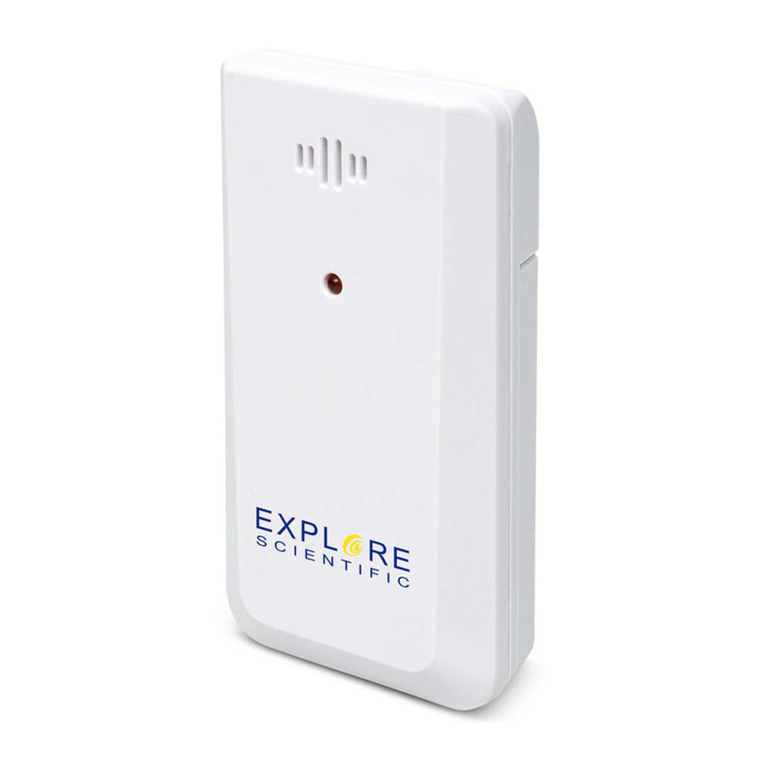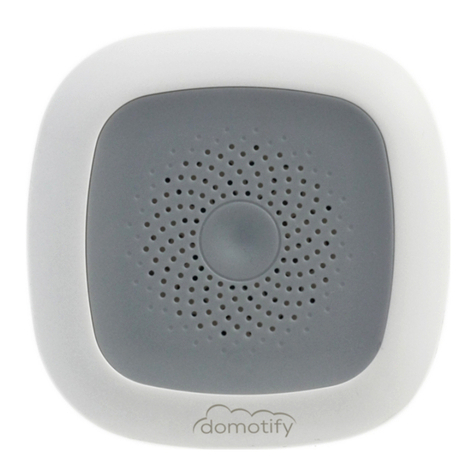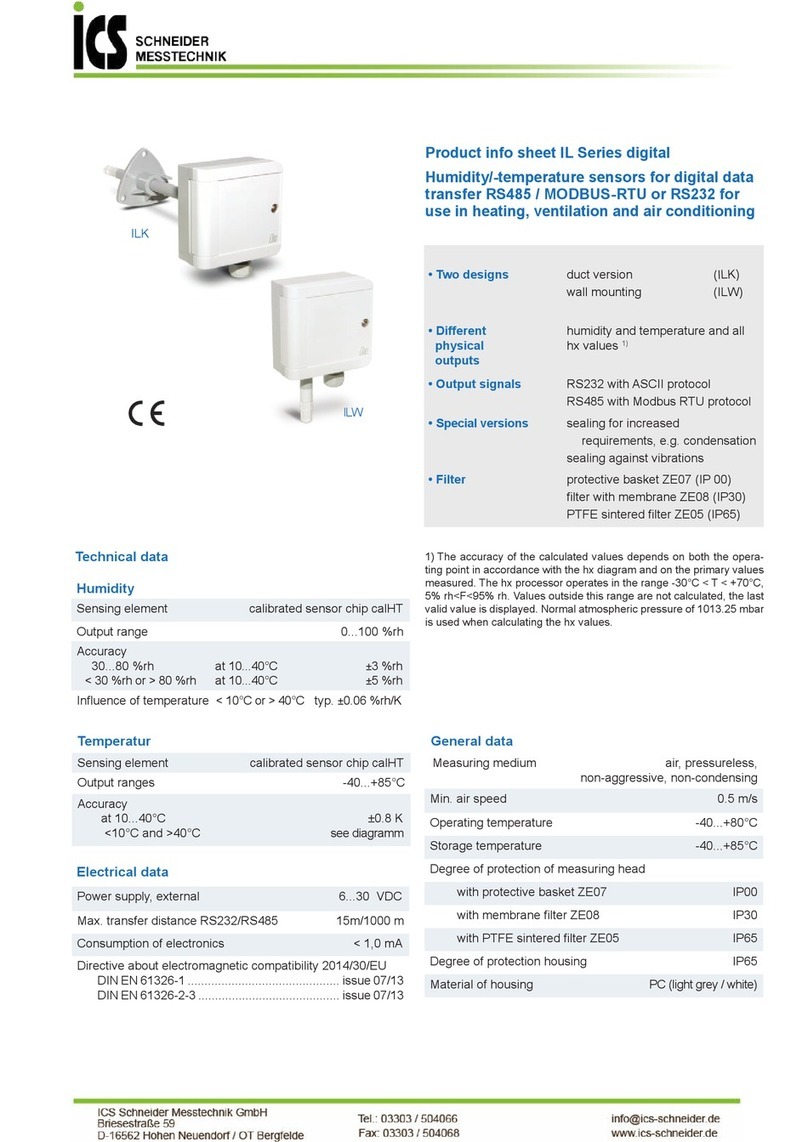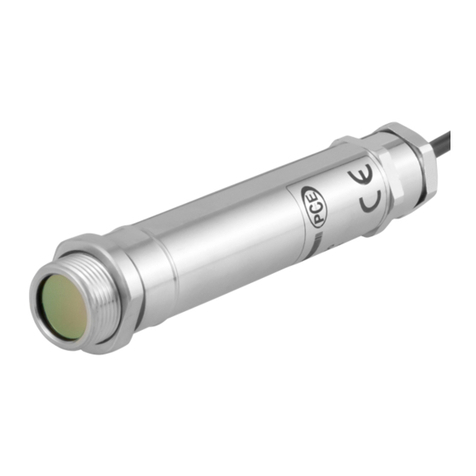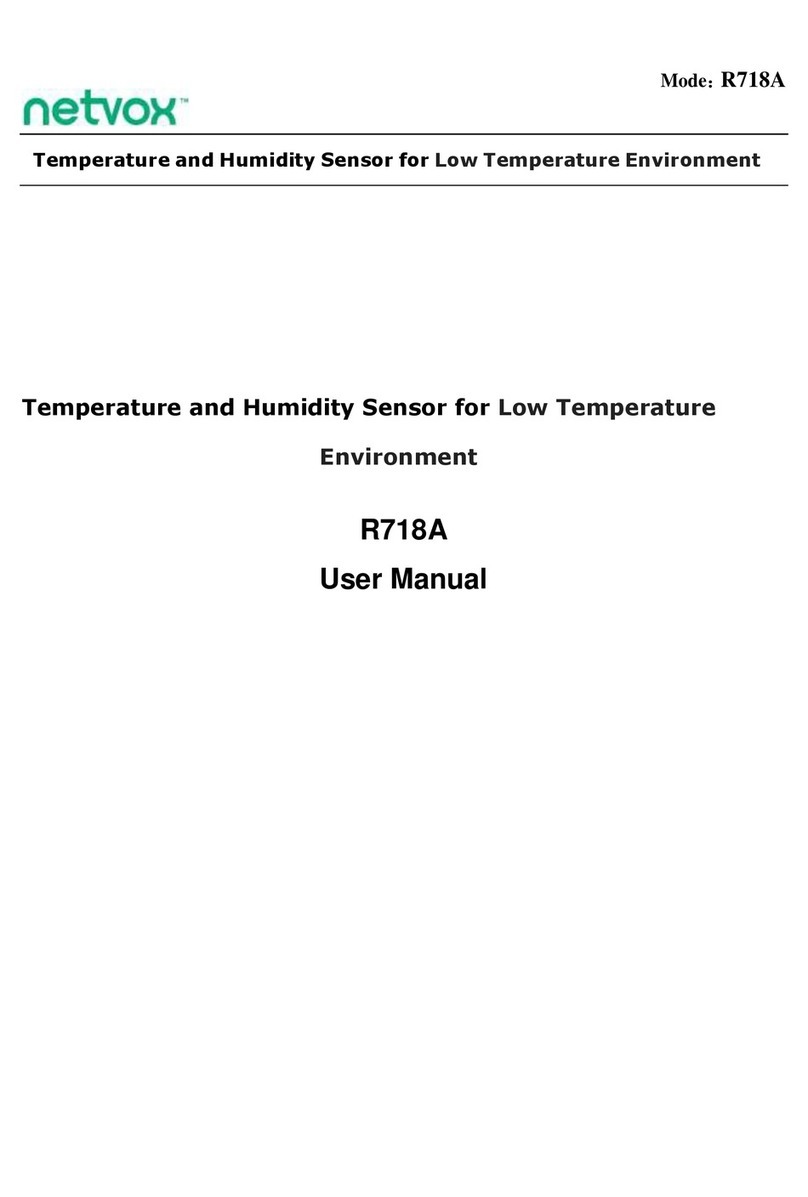
2110 Temperature Controller
Chromalox 2110
Table of Contents
1–Quick Setup ................................................................................................... 1
2–Introduction ................................................................................................... 2
3–Installation and Wiring .................................................................................. 4
4–Adjusting Setpoint and Configuration ......................................................... 12
5–Controller and Alarm Operation .................................................................. 16
6–Replacing Output Modules .......................................................................... 17
7–Calibration ................................................................................................... 19
8–Specifications............................................................................................... 21
9–Troubleshooting ........................................................................................... 22
10–Warranty and Return .................................................................................. 24
Manual Sections
Illustrations
iii
1.1 Dip Switch Settings .................................................................................. 1
1.2 Establishing the Set Point ......................................................................... 1
1.3 Adjusting the Set Point ............................................................................. 1
2.1 Front Panel Identification ......................................................................... 2
2.2 Typical Application................................................................................... 3
2.3 Model Identification ................................................................................. 3
3.1 Default Dip Switch Settings ..................................................................... 4
3.2 Removing Mounting Collars .................................................................... 5
3.3 Mounting Dimensions .............................................................................. 6
3.4 Mounting the 2110 ................................................................................... 6
3.5 Wiring Terminal Identification ................................................................. 7
3.6 Thermocouple Connections with Shield .................................................. 8
3.7 Three-Wire RTD Connections with Shield............................................... 9
3.8 Two-Wire RTD Connections .................................................................... 9
3.9 Control Output Wiring–R1 and S0 ......................................................... 10
3.10 Control Output Wiring–R3 ..................................................................... 10
3.11 Control Output Wiring–V0 ..................................................................... 10
3.12 Control Output Wiring–S1 and S2 ......................................................... 11
3.13 90-260 VAC Instrument Power Connections .......................................... 11
3.14 Alarm Connections ................................................................................. 11
4.1 Establishing the Set Point ....................................................................... 12
4.2 Adjusting the Set Point ........................................................................... 12
4.3 Configuring 2110.................................................................................... 13
4.4 Configuring 2110.................................................................................... 13
4.5 Configuring 2110.................................................................................... 13
4.6 Configuring 2110.................................................................................... 13
4.7 Configuring 2110.................................................................................... 13
4.8 Configuring 2110.................................................................................... 13
6.1 Replacing Output Module ...................................................................... 18




















